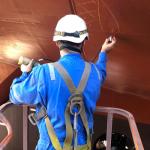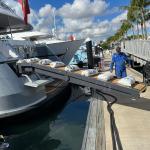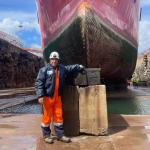Understanding the Global Maritime Distress and Safety System (GMDSS)
The Global Maritime Distress and Safety System (GMDSS) is a comprehensive and automated maritime communication system that enhances safety at sea. Developed under the auspices of the International Maritime Organization (IMO), GMDSS integrates various satellite and terrestrial communication systems to ensure efficient and effective distress signaling and maritime safety.
The Evolution of Maritime Safety
Historically, maritime safety relied heavily on manual communication methods such as Morse code and voice transmissions. The sinking of the RMS Titanic in 1912 highlighted the urgent need for better communication systems to coordinate search and rescue operations. Over the decades, technological advancements led to the development of more sophisticated communication tools, culminating in the establishment of the GMDSS in 1988.
Components of GMDSS
- VHF Radio for Ships: VHF (Very High Frequency) radios are essential for short-range communication. GMDSS mandates the use of Digital Selective Calling (DSC) on Channel 70 to automate distress signaling.
- EPIRB (Emergency Position Indicating Radio Beacon): EPIRBs are crucial for alerting search and rescue services and providing the precise location of a vessel in distress.
- Satellite Communications: Systems such as Inmarsat enable long-range communication, particularly in Sea Area A3 (70° North to 70° South).
- NAVTEX: This system broadcasts maritime safety information, including weather forecasts and navigational warnings.
Sea Areas in GMDSS
GMDSS defines four sea areas:
- Sea Area A1: Within range of VHF coast stations (20-30 nautical miles).
- Sea Area A2: Beyond A1, within range of MF coast stations (100-150 nautical miles).
- Sea Area A3: Beyond A1 and A2, within satellite coverage (70° North to 70° South).
- Sea Area A4: Polar regions, outside A1, A2, and A3.
GMDSS in Action: Notable Distress Incidents
- MV Wakashio (2020): The bulk carrier ran aground off Mauritius. GMDSS-enabled communications played a critical role in coordinating the response efforts and mitigating environmental damage (Inmarsat).
- MV Ever Given (2021): When the container ship blocked the Suez Canal, GMDSS systems facilitated communication between the vessel, authorities, and other ships affected by the incident (EMSA).
- Conception Boat Fire (2019): The tragic fire on a diving boat off California’s coast highlighted the importance of GMDSS in emergency response and the need for stringent safety regulations (MarineLink).
- Stellar Banner (2020): The grounding of this ore carrier off Brazil required effective GMDSS communications for the salvage operation and environmental protection efforts (Inmarsat).
GMDSS Training and Certification
Proper training and certification in GMDSS are mandatory for maritime professionals. The IMO and various maritime training institutions offer comprehensive courses to ensure that seafarers are proficient in operating GMDSS equipment and protocols.
GMDSS Compliance and Future Trends
Ensuring GMDSS compliance is crucial for maritime safety. Regular testing and maintenance of GMDSS equipment are mandated to guarantee functionality in emergencies. The future of GMDSS looks towards greater integration of digital technologies and improved satellite communications to enhance global maritime safety further.
Conclusion
The GMDSS represents a significant advancement in maritime safety, providing a robust framework for distress signaling and emergency response. By integrating various communication technologies, GMDSS ensures that vessels at sea can efficiently communicate in times of distress, significantly improving the chances of timely rescue and mitigation efforts.





